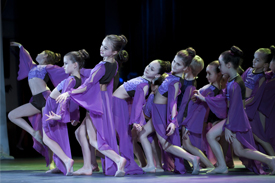 There is much to be learnt from dance competitions as a young, aspiring dancer. However, it is sometimes hard to see it amongst all the craziness that preparing for a competition can bring. Dance competitions can teach many lessons, much more than just dancing on stage in a costume, but it can be difficult to remember this at more challenging moments. Continue reading The benefits of dance competitions
There is much to be learnt from dance competitions as a young, aspiring dancer. However, it is sometimes hard to see it amongst all the craziness that preparing for a competition can bring. Dance competitions can teach many lessons, much more than just dancing on stage in a costume, but it can be difficult to remember this at more challenging moments. Continue reading The benefits of dance competitions
Category: Tips
Training not travelling
 Many young dancers may choose to undertake further dance training and kickstart their career, rather than take a gap year and travel, for example, like many of their peers at school might. Further to that, some dancers may choose to travel abroad to train, or even to a different city, but for some dancers they might prefer to continue training much closer to home. Continue reading Training not travelling
Many young dancers may choose to undertake further dance training and kickstart their career, rather than take a gap year and travel, for example, like many of their peers at school might. Further to that, some dancers may choose to travel abroad to train, or even to a different city, but for some dancers they might prefer to continue training much closer to home. Continue reading Training not travelling
Improving performance
 The transition from studio to stage can be a big one, and often a daunting one. Sometimes dancers are completely comfortable in the studio, but they can experience nerves or even stage fright once the performance must be transferred to a theatre. For some it is a completely natural process, whereas for others it requires more preparation in order to master this. Once you have a method which works for you, stick to it and refine it! Continue reading Improving performance
The transition from studio to stage can be a big one, and often a daunting one. Sometimes dancers are completely comfortable in the studio, but they can experience nerves or even stage fright once the performance must be transferred to a theatre. For some it is a completely natural process, whereas for others it requires more preparation in order to master this. Once you have a method which works for you, stick to it and refine it! Continue reading Improving performance
Managing money
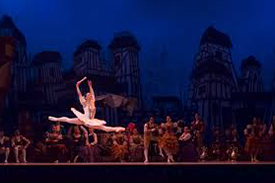 As a professional dancer, it is common for money to come in from various avenues, not just from performing. Many dancers feel it is necessary to supplement their income with teaching or choreographic work, or something aside from the performing arts industry like waitressing or bartending. This work can be hugely flexible so it enables dancers to still perform or audition as much as they would like to. Continue reading Managing money
As a professional dancer, it is common for money to come in from various avenues, not just from performing. Many dancers feel it is necessary to supplement their income with teaching or choreographic work, or something aside from the performing arts industry like waitressing or bartending. This work can be hugely flexible so it enables dancers to still perform or audition as much as they would like to. Continue reading Managing money
Avoiding injury after a break from dance
 With Christmas fast approaching, it is important for dancers – both professional and amateur – to be mindful of their festive break, and work towards minimising their risk of injury after a holiday. Returning after a break can be hard for anyone but for dancers it is important to make the transition as easy as possible. The body must be brought back into action, and it must be remembered that the first few weeks back are high risk when it comes to injury. Continue reading Avoiding injury after a break from dance
With Christmas fast approaching, it is important for dancers – both professional and amateur – to be mindful of their festive break, and work towards minimising their risk of injury after a holiday. Returning after a break can be hard for anyone but for dancers it is important to make the transition as easy as possible. The body must be brought back into action, and it must be remembered that the first few weeks back are high risk when it comes to injury. Continue reading Avoiding injury after a break from dance
What is the recipe for pirouette success?
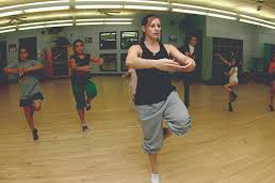 Pirouettes are often a dancing nemesis for young aspiring performers who dream of making dancing their career. Often physical skills and attributes are deemed most important for pirouette success, however it is arguable that attitude and approach hold as much weight as the physical skills required to perform multiple turns. Common faults include being off balance, not engaging core muscles and holding the turn out, not coordinating the arms, head and eyes, not spotting something specific and not using the floor correctly when taking off, then not controlling the ending of the pirouette. Continue reading What is the recipe for pirouette success?
Pirouettes are often a dancing nemesis for young aspiring performers who dream of making dancing their career. Often physical skills and attributes are deemed most important for pirouette success, however it is arguable that attitude and approach hold as much weight as the physical skills required to perform multiple turns. Common faults include being off balance, not engaging core muscles and holding the turn out, not coordinating the arms, head and eyes, not spotting something specific and not using the floor correctly when taking off, then not controlling the ending of the pirouette. Continue reading What is the recipe for pirouette success?
Dancing success
 Since its founding in 1999, more than 80,000 ballet dancers have participated in competitions such as the Youth America Grand Prix, as just one dance competition statistic available of many. While more than YAGP 450 alumni are currently dancing in companies across the world, the vast majority never become professional dancers, let alone those who take part in other competitions as well. Continue reading Dancing success
Since its founding in 1999, more than 80,000 ballet dancers have participated in competitions such as the Youth America Grand Prix, as just one dance competition statistic available of many. While more than YAGP 450 alumni are currently dancing in companies across the world, the vast majority never become professional dancers, let alone those who take part in other competitions as well. Continue reading Dancing success
The impact of dance on health, wellbeing and empowerment
 Yorkshire Dance, the dance development organisation for the region, alongside researchers from the University of Leeds, have published a report on the impact of dance on the health, wellbeing and sense of empowerment of young people. The research, funded by Arts Council England’s Research Grants programme, focused on two groups of young people, aged between 10 and 20, living in a deprived area of East Leeds.
Yorkshire Dance, the dance development organisation for the region, alongside researchers from the University of Leeds, have published a report on the impact of dance on the health, wellbeing and sense of empowerment of young people. The research, funded by Arts Council England’s Research Grants programme, focused on two groups of young people, aged between 10 and 20, living in a deprived area of East Leeds.
Continue reading The impact of dance on health, wellbeing and empowerment
The risk of overstretching
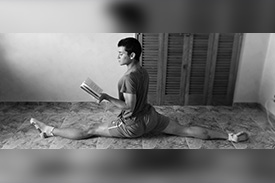 With the daily increase in social media users, particularly Instagram, there is no wonder that the platforms are rife with questionable dance content. More specifically, overstretching can regularly be viewed online by anyone with a device, including aspiring and impressionable young dancers. Continue reading The risk of overstretching
With the daily increase in social media users, particularly Instagram, there is no wonder that the platforms are rife with questionable dance content. More specifically, overstretching can regularly be viewed online by anyone with a device, including aspiring and impressionable young dancers. Continue reading The risk of overstretching
Joining a dance company
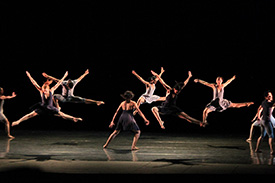 Joining a dance company is a dream for many vocational dance students, however it can be a tricky transition to make after years of training. There can be a lot of pressure to demonstrate your ability in your new job, as well as to embody the type of team member you aim to become. Continue reading Joining a dance company
Joining a dance company is a dream for many vocational dance students, however it can be a tricky transition to make after years of training. There can be a lot of pressure to demonstrate your ability in your new job, as well as to embody the type of team member you aim to become. Continue reading Joining a dance company
